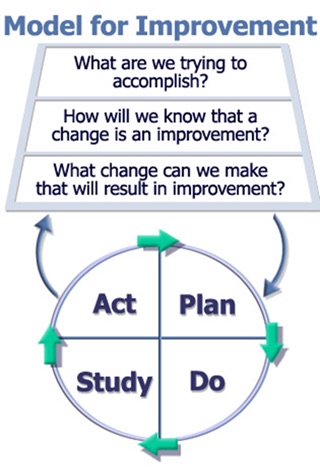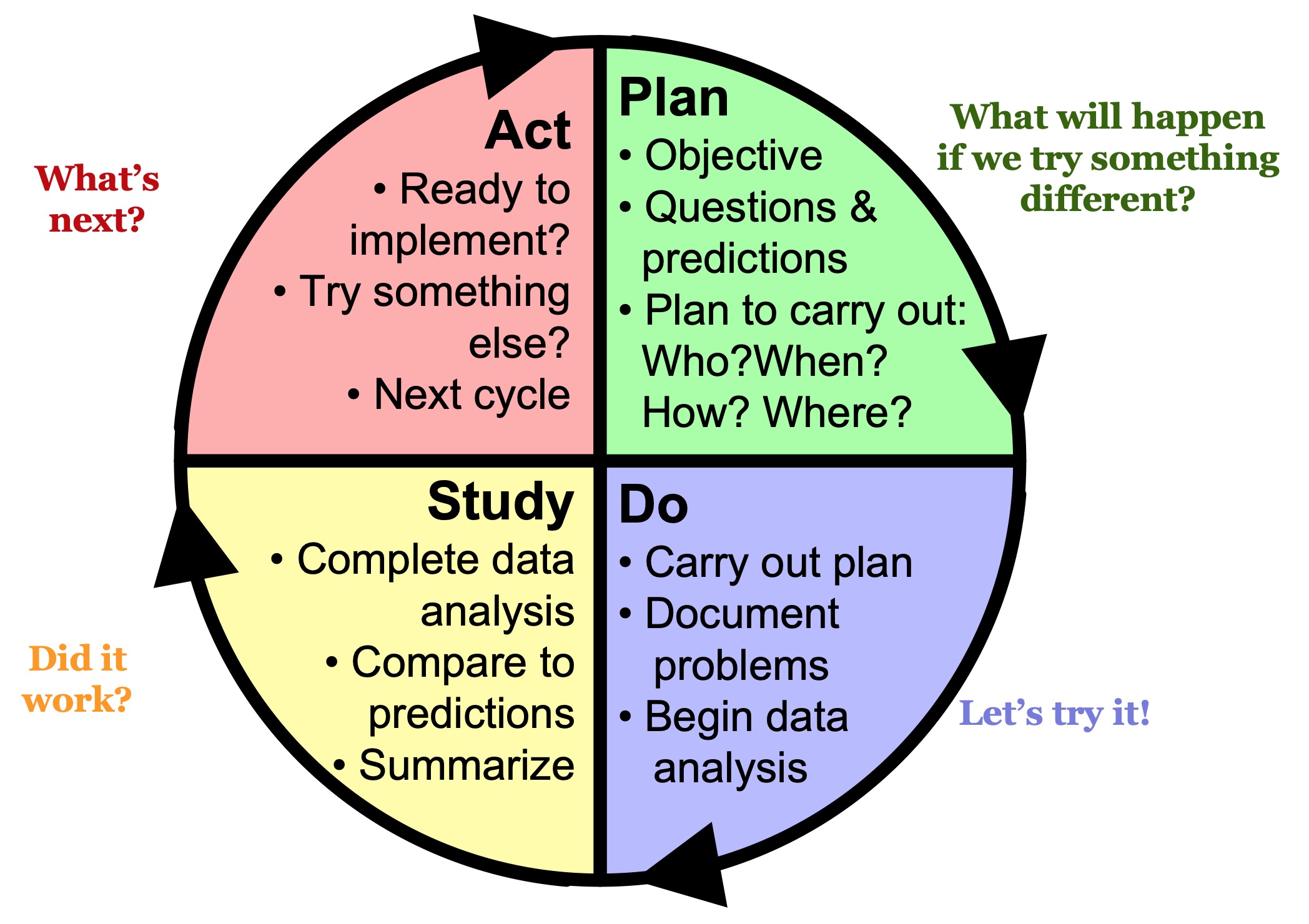In a recent blog post (here), I shared how Associates in Process Improvement transformed Dr. Deming’s theory of Organizations Viewed as a Production System into a five-part approach known as Quality as an Organizational Strategy.
In this series, we’ll take a deeper look at each of the five activities including Purpose, Mission, Vision, and Beliefs; Organization Viewed as a System (includes measurement); System for Obtaining Information; Planning; and Managing Improvement Efforts.
Activity 5 – Managing Improvement Efforts
Dr. Edwards Deming often asked leaders, “by what method?” when they talked of wanting to achieve improvement. His challenge to leaders was that it’s not sufficient to have an aim alone. You also had to have a theory and an approach to executing the improvement.
All organizations have aspirations for improvement, but many do not have a method for designing and executing improvement or for managing the system of improvement efforts. Effective and efficient quality improvement in a complex organizational system requires a shared method and a system of people and processes to support strategic improvement.
A core foundation for any improvement system is a strong grounding in improvement science, bringing together systems thinking as well as understanding variation, theories of knowledge, and theories of human behavior. This is complemented by tools and methods that support testing, implementing, and spreading improvement. You can learn more about the science of improvement here.
It’s important to adopt a shared approach or framework for chartering and executing improvement. There are several approaches (A3, DMAIC, FOCUS-PDSA, etc). I use the Model for Improvement.
Figure – Model for Improvement from API’s The Improvement Guide
…which uses three simple, yet complex, questions that aid in defining and designing our work:
- What are you trying to accomplish?
- How will you know a change is an improvement?
- What changes will result in improvement?
It prioritizes the use of the plan, do, study, act cycle to test and learn from change ideas.

Figure – Plan, Do, Study, Act Cycle (API)
An endless toolbox of tools and methods is available to support learning and improvement. Learn more here.
Finally, there needs to be a system to sponsor and support improvement work. Projects need to be chartered and resourced, progress tracked, and results shared. Local successes shall be implemented and spread. A learning system should aid in sharing knowledge about the successes and challenges of improvement work, unpacking and capturing organizational barriers, and creating a culture of discovery.
Great improvement begins with chartered projects and willing teams. It takes a system to support managing improvement efforts across an organization. Laying the scaffolding and creating the support aid project success, ensure spread, and enhance learning. There’s no one way to do it, but having an improvement framework, some core improvement methods, and tools, and a learning system are a solid foundation.
__
This concludes the five activities of quality as an organizational strategy. What’s presented here only scratches the surface. If pursuing this strategy were easy, everyone would be doing it. It’s not easy and takes focus, commitment, and hard work, but the results are immense, and they build year-on-year. It all begins by just starting the journey.
COMING in 2024: Quality as an Organizational Strategy: Building a System of Improvement from Lloyd Provost, Cliff Norman, and Dave WIlliams
—
If this was helpful, share and include me @DaveWilliamsATX. Sign up here to receive a monthly email from me that includes all my blog posts and other Improvement Science resources I think you’d appreciate.
